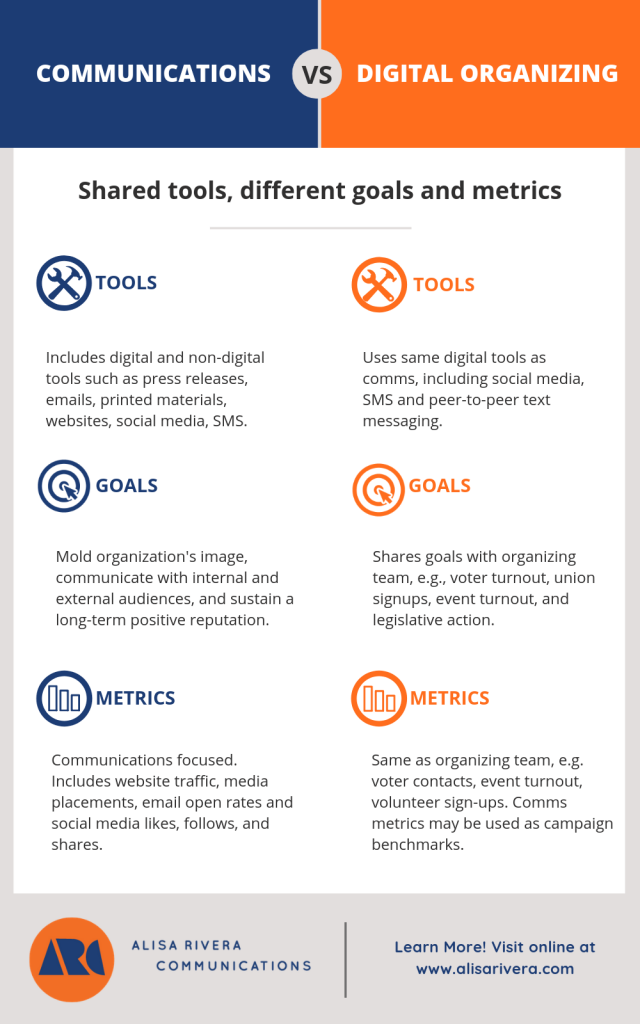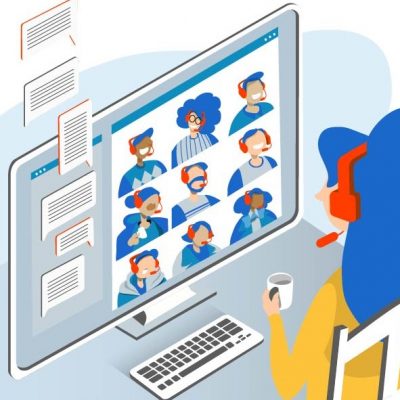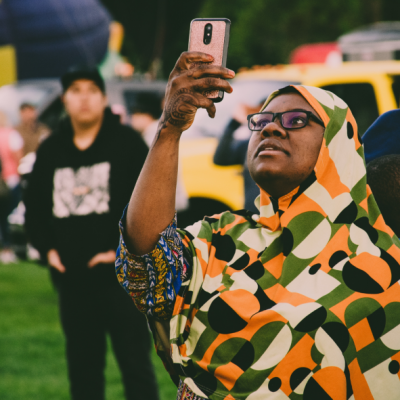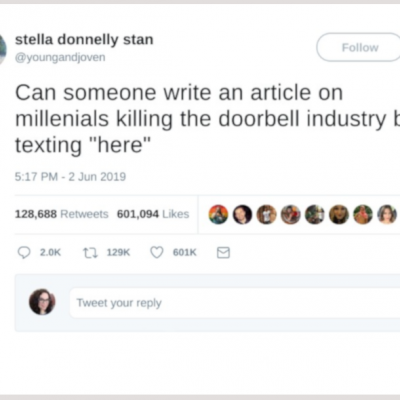Led digital communications (including social media, video production, and graphics) and served as a senior account manager on a labor campaign to hold a large for-profit healthcare corporation responsible for protecting patients and workers from Covid-19. The campaign included large nationwide actions by healthcare workers with strong integration between earned media and digital communications.
Author: Alisa Rivera
Covid-19 Campaign
Oversaw digital communications campaign encompassing organic and paid social media, email and website content to engage individuals who have lost loved ones to Covid or who are struggling with the long-term health consequences of surviving the disease. The goal was to organize these communities to demand accountability from elected officials on the pandemic response and to better support survivors.
How to Run Digital Meetings So They Are Engaging and Drive Action
So after a crazy week of coronavirus news, you’ve pulled your staff from the field and decided to turn to digital meetings to continue the work of labor organizing. But how do you run those meetings so your members leave fired up to take action? Read on for some practical digital meeting tips:
1. Identify what platform you will use
Different platforms are useful depending on who you’re trying to reach, your meeting goals, and how many participants will attend the meeting.
For smaller meetings (six or fewer participants), a platform like Facebook Messenger or Google Hangouts group video chat may be appropriate. A big advantage of these platforms is they are easy to use so the speaker/organizer can run the meeting themselves without assistance.
For bigger meetings of 10 or more participants, consider a video conferencing platform such as Zoom or CiscoWebex. These platforms enable the meeting leader to share slides and documents and conduct polls during meetings. However, the platforms are more complex so it is difficult for the speaker/organizer to run the meeting while also taking care of the technical side.
2. Identify who will run the meeting:
Organizers can run small meetings themselves without additional support. For bigger meetings on platforms like Zoom or CiscoWebex, you should ideally have at least three people involved in running the meeting. Why? Because it’s very challenging to be the meeting leader AND run the meeting software AND answer questions. Splitting those roles will make your meetings run much more smoothly:
➤ Meeting Leader/Speaker: This role will probably be held by an internal or field organizer who will use meeting content to advance organizing team goals.
➤ Tech Support: This person will launch the meeting software, operate slides, switch video between speakers, etc. This person does not have to be from the IT department but they should ideally have experience running the software.
➤ Q&A Monitor: This person monitors questions from members and flags them for the meeting leader so they can be answered. They also provide back channel answers to questions not appropriate to address during the main broadcast.
3. Organize Your Meeting for Maximum Engagement
A big challenge of video meetings is holding the attention of your members so they aren’t multitasking or dropping off early because they aren’t engaged. Here’s some tips for organizing your meeting to hold people’s attention:
➤ Sign into your meeting platform at least 15-20 minutes early: This will give you time to troubleshoot technical issues. It also gives you the opportunity to greet members by name as they join the call and establish up front that you want them to be active participants.
➤ Break up your meetings into chunks of content with interactivity built in to hold the attention of your participants. This includes
– Live video of speaker/meeting leader: Remember to speak with a lot of energy! Digital communication by definition takes place at a distance. You need to bridge that distance with overt displays of emotion and enthusiasm in order to gain and retain the attention of meeting participants.
– Slides: Alternate live video with brief slides with main points you’re communicating. Don’t overload the slides with text.
– Q&A: Pause approximately every 5-10 minutes to take questions from meeting participants, either by having them speak using audio and video or by having the meeting leader answer questions that appear in the chat box. Don’t forget to thank participants for asking questions!
4. Close the meeting with an ask
Ask members to take one action after the meeting. Be specific: ask them to call elected officials, speak to three coworkers about the union, pass out literature, etc. Make sure to follow up with meeting participants via text messages or phone calls to reinforce the ask and confirm they followed through.
5. Finally, give members hope
Things are scary right now. The only way to get through this crisis is to stand together and reaffirm our values. This is not only a challenge but an opportunity to reconnect with your members as a trusted institution at a time when our leaders are failing us. Reinforce that connection whenever or however you meet with members.
6 Tips for Digital Organizing in the Age of Coronavirus
The coronavirus continues to spread—and the impact is already being felt in the political sphere.
Because COVID-19 has an estimated death rate of 2–5%, officials are strongly encouraging social isolation to slow the spread of the disease. The Biden and Sanders presidential campaigns have cancelled rallies and seven Republican lawmakers have self-quarantined after being exposed to coronavirus at the CPAC conference.
But even during a pandemic, the work of labor organizing must go on. That’s why digital tools are more important than ever as a way to engage your members and supporters when you can’t meet with them in person. Here are some tips and tools for you to consider:
1. Position Your Organization As a Trusted Source of Information
Labor unions are uniquely positioned to inform members and counteract misinformation and rumors about the coronavirus crisis—which also presents an opportunity for you to strengthen the ties between your members and the organization.
Schedule regular digital updates about the crisis with your members (using the tools described below) and help connect them to community resources such as healthcare, food delivery, etc. You won’t have all the answers but you can commit to helping members get the information they need to stay safe.
2. Regularly Update Your Social Media Pages and Respond to Comments and Questions
Your members will be hungry for information during this crisis. Make sure you post regular coronavirus updates on your Facebook page and other social media platforms and quickly respond to all questions from your members. Remember: unanswered questions will destroy your credibility with members while answering questions quickly will create trust in the union.
3. Meet with Members in Digital Spaces
Try one of these video communication tools so you get the benefits of face-to-face communication when you can’t meet in person:
✥ Facebook Messenger Group Video Chat: Allows up to six people at a time to appear on camera but up to 50 people can join the conversation.
✥ Facebook Live: Host a live broadcast on your Facebook page to update members about COVID-19.
✥ Google Hangouts: Hold a video call with up to 25 participants.
✥ WhatsApp Video Call: Allows up to four participants to video call.
✥ Zoom: The free option enables you to host group meetings with up to 100 participants for 40 minutes.
✥ Cisco WebEx: New customers now have the option to sign up for a free 90-day license.
4. Stay in Touch with Members Through SMS and Peer-To-Peer Texting
If your organizers aren’t able to visit worksites they can still communicate with members using SMS and peer-to-peer texting. A simple message saying, “I’m not able to travel to your site this week but wanted to check in with you. How are things going on the job?” will do a lot to make members feel connected to the union.
Mass SMS is also the best way to send out urgent or emergency information and will be an invaluable tool to connect your members to community resources as the COVID-19 crisis evolves.
Peer-to-peer messaging through platforms like Hustle is a great way to drive RSVPs for your digital meetings/events and to remind members to tune in when your digital events go live.
5. Plan Now for Digital GOTV
It’s impossible to know at this point how the coronavirus crisis will affect the November 2020 elections. But you should start planning now to use digital tools in the event there are severe restrictions on community contact and canvassing. How will you drive voter turnout when you can’t knock on doors? Don’t wait to figure it out.
6. Last (But Definitely Not Least): Prioritize the Health of your Organizers and Members
In the heat of a campaign it’s typical for organizing managers and their teams to drive themselves to work whether they are tired, hungry or ill. But coronavirus is both highly contagious and deadly for vulnerable people. Traveling door-to-door is a great way to amplify a pandemic. Take a step back and weigh the impact of your organizing on the health of your staff, your members and your entire community. Remember, you do have tools available to help you organize while also dramatically reducing your risk of illness.
Digital Organizing: Who Should Run It?
In part 1 of this series I discussed the differences between communications (developing, cultivating, and maintaining an organizational identity or brand image) and digital organizing (focused on meeting the goals of field organizing campaigns).
Bottom line: the two functions share many tools such as email, SMS and social media, but have different goals and measures for success. And not understanding those differences can sink your organization’s ability to succeed.
So how should organizations structure the digital organizing function and who should own it? I don’t think anyone has a definitive answer to that question yet, but here are some options to consider:
Option 1: The Communications Department
Advantages: Communications team has expertise in the use of digital tools such as SMS, social media, and email. The team is wholly dedicated to communications work and doesn’t have competing responsibilities for field work.
Disadvantages: Communications team doesn’t have field expertise, doesn’t understand the needs of field campaigns and may not have enough staff to manage traditional communications functions while also meeting the needs of fast moving campaigns where responses are needed in a matter of hours.
Potential ways to mitigate the disadvantages:
– Create a smaller team within the communications function assigned to work with field staff (this of course depends on having enough staff resources).
– Have the communications team meet regularly with the field team to gain a better understanding of field strategy and meeting field needs.
– Have communications staff spend time in the field to better understand the field work and how digital tools can be used to support the field.
Option 2: The Field Organizing Team
Advantages: Field team understands the needs of the campaign and sees directly how digital tools impact organizing goals.
Disadvantages: The field organizing team doesn’t have the subject matter expertise to use digital tools effectively or the capacity to take on digital work in addition to their field work.
Potential ways to mitigate the disadvantages:
– Train field organizers on using digital tools and hold them accountable for digital goals and metrics
– Assign digital organizing to specific members of the field team to avoid conflicts between field work and digital work. This depends on capacity and the willingness of field staff to be reassigned to what is essentially a new function.
Option 3: Communications Staff is Embedded in Field Team and Reports to Organizing Director
Advantages: Communications professionals have subject matter expertise. Embedded communications staff ensures that field needs do not conflict with the needs of the communications department. Communications staff is able to collaborate closely with field team, including participating in strategy sessions.
Disadvantages: Communications professionals on field teams can become isolated from their peers in the comms department and lose out on opportunities to build and maintain subject matter expertise. Conflicts can arise between communications professionals and field staff who do not understand each other’s roles. Successful integration of communications staff with the field team requires a strong manager with a clear strategic focus.
Potential ways to mitigate the disadvantages:
– Comms professionals on the field team meet regularly with communications department to share knowledge and keep subject matter skills up to date.
– Organizing director clearly communicates roles and expectations to the field team and emphasizes the importance of digital to meeting organizing goals.
– Mutual education: field and communications staff train each other on their roles, gain a greater understanding of the contributions each make to campaigns.
Communications vs. Digital Organizing
What’s the difference and why it matters.
Part One of a Two-Part Series
Digital organizing is one of the most effective ways for progressive organizations to mobilize supporters and drive voter turnout. Social media, peer-to-peer text messaging, mass SMS, and even search engine marketing are all playing an enormous role in political campaigns and issues-based movements such as labor, reproductive rights, and immigrant rights.
In most organizations, digital communications tools are under the control of the communications/marketing department. But communications departments aren’t well positioned to support organizing because of fundamental differences between the goals of the function and the needs of field campaigns.
Shared tools — but different goals and measures
Communications departments work on developing, cultivating, and maintaining an organizational identity or brand image. Tools and functions housed within communications include media and public relations, marketing emails, printed materials, website design and maintenance (including content production), SMS, and social media. They are also responsible for internal communications with organization staff.
By contrast, digital organizing is focused on meeting the goals of organizing campaigns. While digital organizing teams use many of the same tools as the communications team (social media and SMS in particular), they use the tools to do things like drive voter turnout, union signups, event turnout, and legislative action.
Digital organizing measures success using the same metrics as the field organizing team.
Communications departments measure success using their own metrics, including website traffic, email open and click-through rates, media placements and quality of coverage, and social media likes, follows, and shares.
Digital organizing measures success using the same metrics as the field organizing team: How many people turned out for your event? How many supporters called and texted elected officials about your issue? How many people turned out to vote? While communications-related metrics have value as milestone measures and help refine messaging and target audiences, they are not the ultimate drivers of the digital organizing strategy.
To be somewhat reductive, communications metrics generally exist in the digital and media space while digital organizing metrics focus on actions taken by target audiences outside of digital spaces.
Communications isn’t well-positioned to take on digital organizing
Because communications exists as a separate entity with its own goals and metrics, most communications teams are not well-positioned to effectively support field organizing. Issues that commonly arise when communications is tasked with digital organizing are:
● Communications team does not have the capacity to rapidly respond to the needs of a fast-moving field campaign.
● Communications team is not included in strategy or daily planning meetings with the field team and as a result does not have a clear understanding of field goals and organizing needs.
● Field organizing director and team do not understand how digital communications tools can support and drive field goals and do not include those tools when planning field strategy.
● Staff tasked with digital organizing report to the director of communications, which can create conflict between the needs of the communications team and field organizing team.
So what does this mean for your organization? What do you need to put into place to ensure the success of both the communications team and field organizing team? In Part 2 of this series, I discuss how you can best position your organization and avoid a conflict that can sink your ability to meet your goals.
Below is an infographic you can use with your staff to differentiate between the functions of communications and the digital organizing team. A PDF version can be downloaded here.

Diversity is Hard Y’all
Recently, a Politico piece by Jesus Rodriguez called out the Democratic presidential candidates for having poorly translated Spanish websites. The reason is likely candidates relying on Google Translate instead of hiring skilled translators.
A lot of folks on Twitter called out the campaigns for not hiring Latinos and while I agree that having a staff that reflects the Democratic electorate is absolutely critical to the party’s long-term success, that alone won’t solve the problem of communicating with a diverse audience.
As someone who has dealt with this issue first hand, I can tell you that it is really complicated.
I worked as a communications manager for SEIU Local 2015, which represents 385,000 long-term care workers across California. SEIU 2015 is one of the largest and most diverse labor organizations in the US and the leadership is dedicated to engaging all of its members no matter what language they speak.
All of SEIU 2015’s materials are translated into Spanish, Armenian, Chinese (which touches on Mandarin and Cantonese speakers), Korean and Vietnamese at minimum, with additional languages added depending on need. I worked a nursing home union election where text messages had to be translated into Punjabi.
The union also hires professional interpreters for in-person meetings. Statewide meetings look like the United Nations with booths of interpreters lined up on one side of the room while members wear headsets designated for their languages.
However, even with the resources SEIU 2015 has poured into multilingual communications, it was a constant challenge to get it right. Members often complained about bad interpreters/weird translations. It is NOT as simple as “hire a diverse staff.”
One example: there are two dialects of Armenian (Eastern and Western). While there is some mutual intelligibility, there is also a huge amount of class and cultural baggage attached to which version you use (diaspora vs. people from Armenia, wealthy vs. working class). Using the wrong dialect can end up alienating the people you are trying to win over.
Another example: When we translated text messages to Punjabi, we had to scramble with our SMS provider to make sure they could support the alphabet. As we learned, texting in languages that don’t use a Roman alphabet can cost you more simply because the texts qualify as MMS (media messages that are more expensive) rather that SMS (simple text messages).
Yet another example: you don’t hire interpreters for “Chinese” you hire them for Mandarin and Cantonese. And that doesn’t account for mainland Chinese vs. diaspora Chinese in southeast Asia who have different accents and dialects. How will your native Cantonese audience react to an interpreter whose accent and dialect clearly marks them as an ethnic Chinese native of the Philippines? This is all separate from the issue of online linguistic, social and cultural communities with their own channels, memes, and in-jokes. You may be fluent in Spanish but are you fluent in chancla and Vicks memes?
Plus you do know that Mexican, Puerto Rican, Guatemalan, Dominican, and other varieties of Spanish each have their own vocabulary and idioms that have as much in common as American English has with British, Australian, and South African English, yes?
Also, each Spanish speaking country has its own history and racial mix that informs the culture. I recently had a conversation with a Chicana lamenting that she had no idea how to engage Afro-Latinos from the Caribbean.
Finally, remember that having a Spanish last name doesn’t mean you’re fluent in Spanish and doesn’t mean you’re capable of the highly complex work of translation/interpretation. Signed, Nuyorican who can basically order in a restaurant and ask for directions.
In short: Communicating with diverse communities is hard. Is complicated. Is not as simple as hiring people with the right last name.
The Death of Doorknocking
We already know that Millennials don’t watch cable TV and don’t talk on the phone. Now we can add another item to the list of things they don’t do: Answer doorbells. At least that’s what millenials are saying on Twitter.
It isn’t just millennials who aren’t answering doorbells anymore. As the external communications manager for SEIU Local 2015, I saw first hand how field organizers were increasingly challenged to get people to open the door. Along with phone banking, door-to-door organizing has become increasingly more labor intensive and more expensive with dwindling returns.
Face-to-face contact is still demonstrably the most effective way to turn out supporters. But with people increasingly willing to ignore the doorbell, it’s important to use communications technology to improve the odds of making contact.
While at SEIU 2015, I worked with field organizers to turn out non-members for a statewide day of action in support of long-term care workers. Turning out non-members is a way to engage workers who may later choose to organize a union at their workplace. But, understandably, it can be a challenge to turn out non-members for a union event.
We decided to test the Relay peer-to-peer messaging application in addition to phone banking and door knocking for turnout. The power of peer-to-peer messaging is that it allows organizers to directly engage workers and have persuasive conversations with them in real time. For this test, we used Relay to reach workers whom we had failed to reach by phone or at the door.
The results were remarkable: engagement rates were as high as 30% in California’s Central Valley and other regions. We were able to turn out an unprecedented number of non-members to the union action and also add them to our lists for long-term cultivation.
Based on the results of this test, I believe that peer-to-peer messaging should be an integral part of any field organizing campaign. Uses can include contacting targets in advance to increase the odds of meeting people face-to-face, as well as engaging supporters who can’t be reached through other channels.










